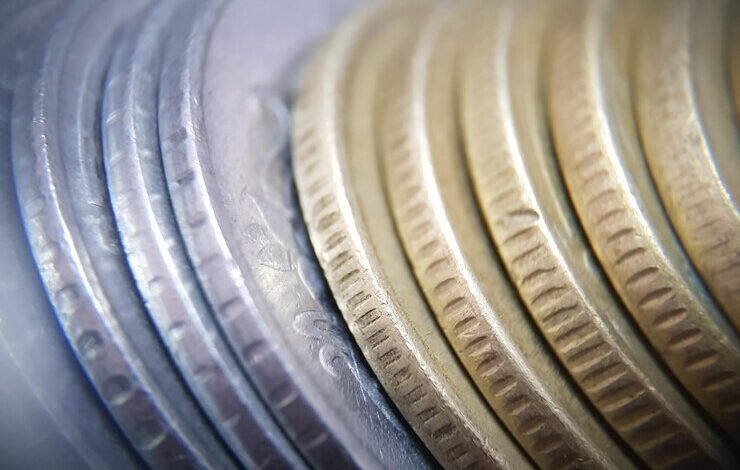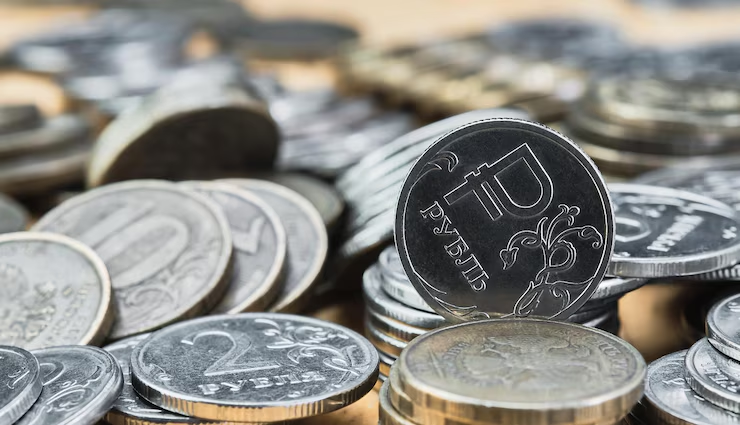
The Indian Rupee, as the official currency of India, plays a significant role in the country’s economy. Among the various denominations of currency, the ek rupee coin ka manufacturing cost kitna hoga? has its own importance. It is commonly used in day-to-day transactions, yet many people may not realize the intricate processes and costs involved in manufacturing this seemingly simple coin.
When it comes to the cost of manufacturing a one-rupee coin (ek rupee coin ka manufacturing cost kitna hoga?), there are several factors to consider, including the material costs, labor, technology, and the overall infrastructure of the minting process. In this article, we will explore the various components that go into determining the manufacturing cost of a one-rupee coin in India.
The Role of the Reserve Bank of India (RBI) and the Government
In India, the Reserve Bank of India (RBI) is responsible for regulating and managing the currency system. The actual minting of coins, however, is carried out by various government-owned mints under the supervision of the India Government Mint (IGM), which operates under the Department of Economic Affairs, Ministry of Finance.
India has several mints across the country where coins are manufactured, including in cities such as Mumbai, Kolkata, Hyderabad, and Noida. These mints follow stringent procedures to ensure that the coins produced meet the required standards of quality, weight, and durability. The one-rupee coin, being one of the most commonly used denominations, is minted in these facilities along with other denominations.
The Materials Used in the ek rupee coin ka manufacturing cost kitna hoga?
One of the most significant factors that influence the cost of ek rupee coin ka manufacturing cost kitna hoga? is the material used. The Indian one-rupee coin, which has undergone several design changes over the years, is currently made from an alloy of copper, nickel, and zinc. The specific composition of the coin may vary slightly depending on the year of minting, but it generally consists of the following metals:
- Copper: The primary metal, contributing to the strength and durability of the coin.
- Nickel: Adds strength, corrosion resistance, and a shiny appearance to the coin.
- Zinc: A metal that helps reduce the overall cost of the coin and adds to its durability.
In the past, the one-rupee coin has been made of different alloys, including a mixture of nickel-brass and steel. The choice of material is critical because it determines the coin’s durability, appearance, and resistance to wear and tear. The cost of these metals fluctuates according to market prices, so the cost of manufacturing the coin is subject to these variations.
The Manufacturing Process of One Rupee Coins
The process of manufacturing a one-rupee coin involves several steps, each requiring precision, technology, and human expertise. Let’s take a closer look at the steps involved in coin production.
1. Melting and Alloying the Metals
The process begins with the melting of raw metals—copper, nickel, and zinc—into a liquid form. The metals are carefully measured and combined in precise proportions to form the alloy that will be used for minting. The alloy is then cast into billets (a bar or block of metal) of the desired size.
2. Coin Blank Production
Once the alloy has been formed into billets, the next step is to create coin blanks. These are round discs of metal, also known as “planchets,” that are cut from the larger billets. The blanks are then cleaned and polished to remove any impurities or surface defects.
3. Annealing and Cleaning
The coin blanks are then subjected to an annealing process, which involves heating them to a high temperature and then cooling them gradually. This process softens the metal and makes it easier to mint. After annealing, the blanks are cleaned using a special solution to remove any remaining impurities.
4. Striking and Coin Minting
The next crucial step is the striking process, where the prepared coin blanks are placed between two engraved dies. One die contains the design of the coin’s front (obverse), and the other die contains the design of the back (reverse). The blanks are subjected to high pressure, forcing them to take on the shape and design of the dies. This process is performed using a hydraulic press.
5. Quality Control and Inspection
Once the coins have been struck, they undergo rigorous quality control checks to ensure that they meet the required specifications in terms of size, weight, and design. Any coins that are defective or do not meet the standards are discarded.
6. Packaging and Distribution
After passing the quality checks, the coins are packaged in batches and sent to the RBI or the respective banks for distribution. The coins are then made available for circulation through various banking channels and branches.
Factors Affecting the Cost of Manufacturing a One Rupee Coin
Several factors influence the total cost of manufacturing a one-rupee coin. These include:
1. Raw Material Prices
As mentioned earlier, the cost of raw materials, including copper, nickel, and zinc, plays a significant role in determining the overall manufacturing cost. Since the prices of these metals fluctuate in the global market, the cost of producing a one-rupee coin can vary over time.
2. Technology and Machinery
The technology and machinery used in the minting process also contribute to the cost. Modern mints use state-of-the-art machinery, including hydraulic presses and automated inspection systems, to ensure the coins are produced with precision and consistency. The investment in such machinery adds to the overall cost of manufacturing.
3. Labor and Operational Costs
Labor costs are another crucial component. Skilled workers are needed to handle the machines, monitor the production process, and ensure quality control. Additionally, operational expenses, including electricity, maintenance, and logistics, also contribute to the overall cost.
4. Security and Infrastructure Costs
Given the nature of the operation, coin mints must have strong security protocols in place to prevent counterfeiting or theft. This includes the cost of secure facilities, surveillance, and other safety measures. Maintaining these high-security standards can add to the cost of manufacturing coins.
5. Design and Minting Fees
Changing the design of coins (such as adding a new feature, commemorative elements, or switching to a new alloy) may increase the cost of production. The fees associated with the design and engraving of new dies are also considered as part of the total manufacturing cost.
Cost of Manufacturing One Rupee Coin: An Approximation
So, what does all of this add up to in terms of the actual cost of manufacturing a one-rupee coin? According to various estimates, the ek rupee coin ka manufacturing cost kitna hoga? in India is approximately between ₹2.5 to ₹3 per coin. This cost is higher than the face value of the coin (₹1), meaning that the government incurs a loss on each coin minted. However, this loss is relatively small and is offset by the large number of coins that are produced and circulated each year.
It is important to note that while the face value of the coin remains ₹1, the total cost of manufacturing is influenced by several factors like raw material prices, technological advancements, labor costs, and security measures, all of which increase the overall expenses.
Economic Implications of Manufacturing Costs
The cost of producing coins that are worth less than their manufacturing cost may seem like a loss, but there are several reasons why this approach is still economically viable for the government. Coins, especially those with a low denomination like ₹1, are durable and have a long lifespan, meaning they can circulate in the economy for years without needing to be replaced frequently. This durability helps offset the higher initial cost of manufacturing.
Additionally, minting coins instead of printing banknotes for lower denominations helps reduce the overall cost of currency production. Coins are more cost-effective in the long term, especially for denominations that are commonly used in daily transactions.

Conclusion
The ek rupee coin ka manufacturing cost kitna hoga? in India is a multifaceted topic, involving the prices of raw materials, the technology used in the minting process, labor costs, and more. While the government incurs a higher cost than the face value of the coin, the durability of coins and their role in the economy justifies this cost. Understanding the economics behind currency manufacturing provides valuable insight into how governments manage the production and circulation of money.
Coins may seem like simple objects, but the entire process behind their creation is an intricate system that involves careful planning, resources, and expertise. From the selection of materials to the final packaging, each step plays a crucial role in ensuring the one-rupee coin serves its purpose in the Indian economy.




